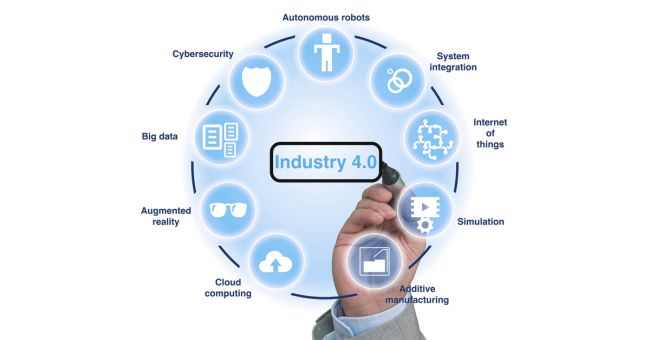Nowadays, growth is fading away and it’s a big deal. Our global economy stops growing and it’s not new. Growth has actually declined over the last 50 years. If we look at the history of growth, times of big growth have always been fueled by big manufacturing revolutions. It happened three times, every 50-60 years. The steam engine in the middle of the 19th century, the mass-production model in the beginning of the 20th century – thanks, Mr. Ford. And the first automation wave in the 1970s. Those manufacturing revolutions have created huge growth, because they have improved productivity. It’s rather simple: in order to grow, we need to be producing more, putting more into our economy. Each time, productivity has been the growth lever.
Over the last years we failed at reinventing the manufacturing space, and large technological innovations have played away from it. But the fourth manufacturing revolution will combine manufacturing and technological innovations and it’s already happening right now. Major technologies are entering the manufacturing space and will boost industrial productivity by more than a third which will create growth.
Here are some examples of the manufacturing revolution at play:
• Manufacturing robots that will collaborate with humans and can be programmed in order to perform complex, non-repetitive tasks. Today 8% of the tasks are automated and by 2025, 25 percent of the tasks will be. So advanced robot will contribute to 20 percent additional growth.
• Additive manufacturing, 3D printing. 3D printing has already improved plastic manufacturing and it’s now making its way through metal. Those are not small industries. Plastic and metals represent 25 percent of global manufacturing production.
• Other like: horizontal/vertical integration, augmented reality, simulation, big data and analysis, …
The new manufacturing revolution is not only about more productivity but also about producing better, smarter products. It’s about scale customization. Imagine a world where you can buy the exact products you want with the functionalities you need, with the design you want, with the same cost and lead time as a product that’s been mass produced. The new manufacturing revolution makes it possible.
It will also create a huge macroeconomic shift: factories will be relocated into our home market and those will be smaller and agile. Scale does not matter anymore, flexibility does. They will be operating on a multi-product, made-to-order basis. The change will be drastic.
This fourth manufacturing revolution is a chance for all of us. If we play it right, we’ll see sustainable growth in all of our economies.
Source:
• https://www.atkearney.com/documents/10192/5992684/3D+Printing+A+Manufacturing+Revolution.pdf/bf8f5c00-69c4-4909-858a-423e3b94bba3
• https://www.ted.com/talks/olivier_scalabre_the_next_manufacturing_revolution_is_here
• https://www.youtube.com/watch?v=yjuzeLsoGSo
• http://www.nextmanufacturingrevolution.org/
• http://www.mckinsey.com/business-functions/operations/our-insights/digital-manufacturing-the-revolution-will-be-virtualized
• https://www.linkedin.com/pulse/20140915075150-11691688-the-evolution-of-the-digital-manufacturing-business
• http://www.criticalmanufacturing.com/de/newsroom/blog/posts/blog/industry-4-0-the-next-revolution-is-here#.V-OL5KKLRcw

